Spirou à Cuba (“Spirou in Cuba”) is one of the great what-ifs in the history of the series. Announced as the next Spirou adventure in 2000, following Tome & Janry’s radical re-imagining of the series in Machine qui rêve (“Machine That Dreams”; Spirou 46), it never appeared, and the comic went into hiatus. As late as 2004, Tome & Janry were still publicly saying they would finish it, even as the publisher started looking for someone else to take over The Adventures of Spirou and Fantasio.
A couple of inked pages were finally shown as part of an exhibition in 2008, stoking the interest of fans. However, with the series in new hands, the duo no longer seemed to have any intention of completing it. Their negative experience working as one of three rival Spirou teams (alongside Nic & Cauvin and Yves Chaland) when they first took over the series also made them disinclined to have it published as an out-of-continuity one-shot album.
It was therefore a pleasant surprise when in 2011 the eight completed pages of the story appeared in issue #3839 of the Journal de Spirou (a “come-back” issue that brought back a number of comics from the magazine’s past for a special appearance). Retitled Zorglub à Cuba (“Zorglub in Cuba”), presumably because Spirou barely appears in these pages, this is likely to be all we’ll ever see of Tome & Janry’s final Spirou adventure.
[Not a valid template]The magazine also carried an interview with Tome by editor Hugues Dayez:
These pages have never before been published. ‘Zorglub in Cuba’ was to be the fifteenth Spirou and Fantasio album by Tome and Janry. But the duo abandoned the story along the way, and the (beautiful!) pages were left in their drawers.
HD: This adventure follows Machine qui rêve, an album that in 1998 marked a turning point in the series, with a tone and a visual style leaning towards the semi-realistic.
Tome: Ever since we took over the series in 1981, Janry and I tried to gradually bring in some innovations – like Franquin himself would probably have done – e.g. by taking Spirou to real places rather than the imaginary destinations of the past: New York, Moscow… And as we approached the year 2000, we drew up a document about our work, with the question: how could we update the series beyond just a superficial or “cosmetic” facelift?
Philippe Vandooren, editor-in-chief and editorial director at Dupuis, who was a sort of mentor to us from the beginning, listened with great interest to my idea for the plot of Machine qui rêve. It was an idea that broke away a bit from the usual, since I introduced the existence of a kind of clone of Spirou. The story was told from the point of view of the clone, while maintaining throughout a degree of ambiguity for the reader. It departed from the humorous adventure realm to arrive at a darker tone, which required another visual style. And Janry was ready to address this challenge.
The success of your series Le Petit Spirou also influenced this shift.
Tome: Exactly! Le Petit Spirou quickly won the support of the readers, so much so that the sales of this spin-off series eventually exceeded that of the parent series Spirou et Fantasio. But on the creative side, we ran up against an obstacle. As the storytellers on both the two high-profile series, we had to maintain a consistent timeline: since Spirou was an adult in the present day, Le Petit Spirou‘s childhood setting necessarily had to evoke the past. Now, being stuck in a retro and nostalgic atmosphere in Le Petit Spirou wasn’t very helpful: it restricted us from using jokes from the modern life children knew, with gadgets, video games, etc. Therefore, in order to establish Le Petit Spirou in the present, we decided to place the Spirou et Fantasio series in the near future, which allowed us to develop ideas based on science fiction and futuristic technologies.
In this new episode, you feel immediately that Zorglub has become even more menacing: he has lost his “comedy villain” aspect.
Tome: This had to do with the more serious edge that we wanted to give the series. In this context, that meant toughening the characters’ personalities. Zorglub, originally, is a mix between Greg’s thriller elements and Franquin’s whimsy. And so, since we wanted to emphasize the suspense in the adventures of Spirou and Fantasio, it was imperative to have a conflict with a very dangerous enemy.
You subscribe to Hitchcock’s philosophy: “The more successful the villain, the more successful the picture!”
Tome: Absolutely! And in this episode, Zorglub is preparing to conquer Cuba and some other island states to transform them into private prisons, where inmates gamble their lives by becoming real gladiators in virtual games. This, of course, is done by means of his genius for electronics and his burning ambition to control people’s neurons, to make humanity obedient slaves of his gaming “matrix” …
A dastardly plan! But then why did you abandon the story?
Tome: For several reasons. First, in July 2000, the death of Philip Vandooren removed the main supporter we had for taking Spirou and Fantasio in this direction. We didn’t find his successors as receptive to our ideas. Then, pulled away by the growing success of Le Petit Spirou, the progress on this new Spirou episode, which we had thought about for so long, went too slowly. Result: our own enthusiasm waned… And then in time we focused exclusively on Le Petit Spirou, which unlike the “big” Spirou was 100% our baby!

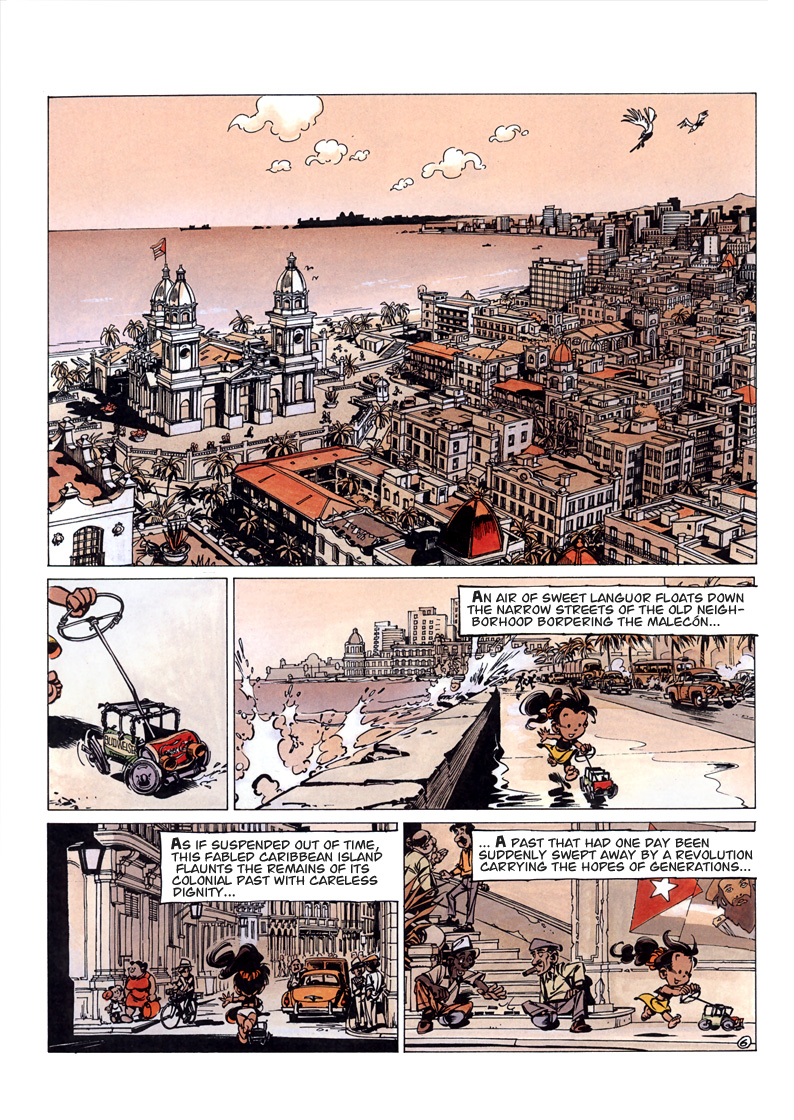
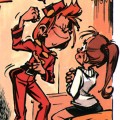
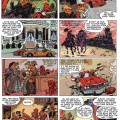
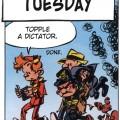
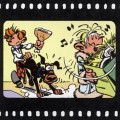
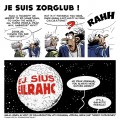
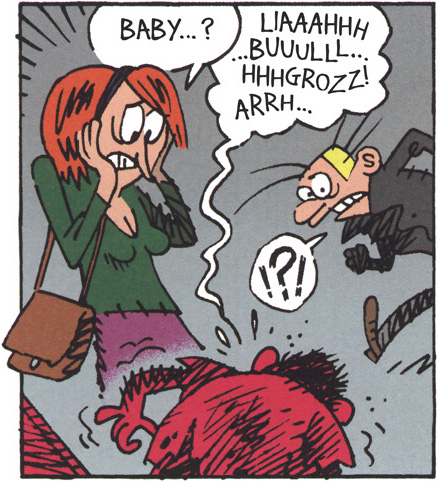
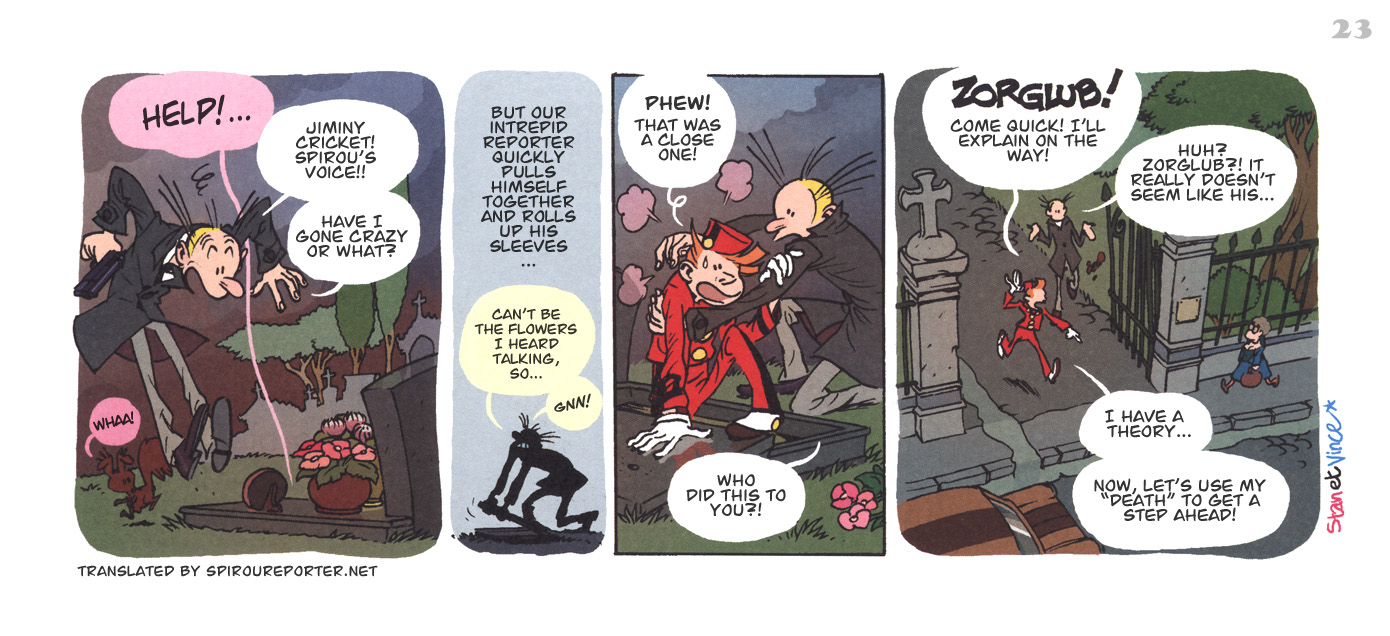

Great! A finished version of this story would have fitted perfectly into the one-shot series, but that seems unlikely unless Tome and Janry should change their mind about not continuing the story. It was a big mistake to sack Tome and Janry considering the “dark ages” under Morvan and Munuera. Personally I think Tome and Janry are wasting their talent on Le Petit Spirou. About Spirou/Zorglub à Cuba, the drawing style seems somewhere in between that of Machine qui rêve and their earlier stories.
My understanding is that they weren’t so much fired as they just lost interest in the series and stopped working on it. The new management at Dupuis weren’t happy with their plans for the series (more to the point, they weren’t happy that sales of MQR dropped 10% compared to previous albums), but it’s not clear whether they actively interfered, i.e. by demanding changes to [i]Spirou in Cuba[/i] that Tome & Janry didn’t want to implement.
I’ve also seen claims that Tome developed writer’s block, and wasn’t actually able to complete any more album-length stories for some time (there was an album of [i]Soda[/i] in 2001 and then one in 2005, but nothing since then… until a penciled page was posted on Facebook earlier this year).
Personally, there is no part of the description of what they planned to do with the series that sounds like a good idea to me. I don’t find MQR to be successful either as a Spirou album or even as a standalone suspense/thriller story, and from the looks of it I wouldn’t have liked [i]Cuba[/i] all that much more (except for the art). Much as I admire Tome & Janry’s work on the series, and as interesting as it would be to see this adventure completed, I’m happy [i]Spirou[/i] did not go in this direction.
Trond Gulvik Larsen liked this on Facebook.
Odd Eivind Koppang Torp liked this on Facebook.
Marius Hestness liked this on Facebook.
Helge Kvingedal liked this on Facebook.
Helge Kvingedal liked this on Facebook.
Marius Hestness liked this on Facebook.
Trond Gulvik Larsen liked this on Facebook.
Odd Eivind Koppang Torp liked this on Facebook.